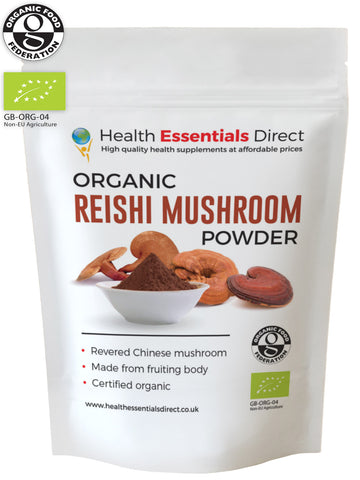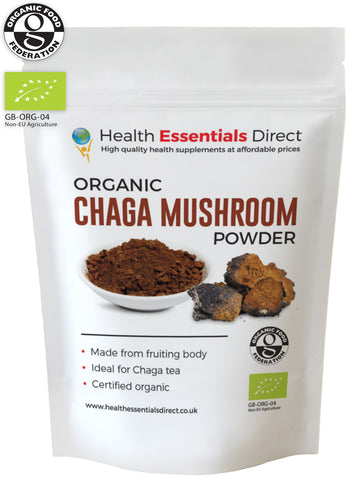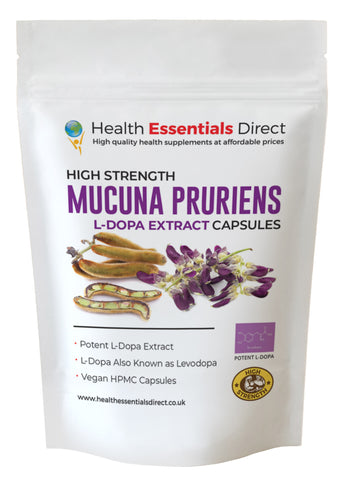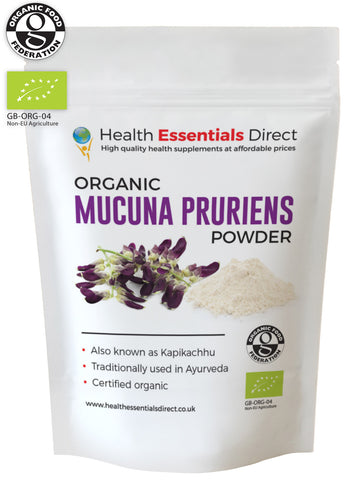Organic Maitake Mushroom Powder (Japanese Delicacy)
Organic Maitake Mushroom Powder
-
Certified Organic by Organic Food Federation
-
Made From The Fruiting Body
-
Ancient Japanese Delicacy
About Maitake Mushroom
Maitake mushrooms (Grifola frondosa) are a fungus with a perennial fruiting body growing at the base of trees. Maitake mushrooms can be described as polypore mushrooms based on the mode of reproduction. The mushrooms are widely known as the “hen of the woods” due to their close resemblance to the feathers on chicken. Maitakes are also considered “the king of mushrooms” due to their humongous size when placed alongside other types of mushrooms. The mushrooms, which are often processed into maitake mushroom powder, are also referred to as sheep’s/ram’s head, cloud mushroom, dancing mushroom, huishu hua, shelf fungus, and Huai Su Gu. This set of mushrooms is native to China, Japan, and North America. Maitake mushrooms are particularly fond of growing on the base of two species of trees, the maple tree, and the oak tree. Cultivation of these mushrooms is common even though their most ideal environment to thrive in is the wild. They are normally clustered with a single one able to grow 50 cm wide. The whole bunch can be as heavy as 100 pounds. The whole mushroom emerges from a tuber-like structure called a sclerotium. The fruiting body consists of several caps that are oval-shaped. The caps are pale brown but white on the edges. Underneath each cap is a few pores that have tubes not more than 3mm in depth. These pores produce spores occasionally. These mushrooms are thoroughly cleaned after harvesting, dried, and ground to form Maitake mushroom powder. This powder has a pleasant, almost earthy taste.
Fungi are among the oldest living organism on the planets with some species existing for more than 500 million years. Around 300 million years ago, ascomycetes and basidiomycetes, surfaced on the earth. This included mushrooms, which produced their own set of fruiting bodies. By context, the earliest human being did not exist until about 2.4 million years ago in the savanna. This means that mushrooms were in existence millions of years before the earliest human being. However, it wasn’t until 2000 years ago when the first bunch of maitake mushrooms were discovered. It is said that some people from ancient Japanese tribes came across it when going to cut wood in the forest. The maitake mushroom was so rare, that whenever anyone came across one in the wild, they danced with joy. This, coupled with its very sumptuous taste gave it its famous name “the dancing mushroom”.
Following its discovery, maitake became a revered herb in ancient Chinese and Japanese forms of healing. A couple of ancient myths claim that the mushrooms were at some point in time utilised as a form of currency. The provincial nobles traded maitake mushrooms for silver that weighed the same from the sovereign leader of Japan, popularly known as the shogun. Cultivation of mushrooms did not start until 600AD when ancient Chinese people planted them on logs of wood. Around 1979, Japanese biologists developed outdoor techniques for the cultivation of the maitake mushrooms. The use of sawdust that had been enriched with substrates came into play and forever revolutionised the cultivation of mushrooms.
- Please note it is against MHRA guidelines for us to talk about any potential health benefits for this supplement however a quick google search on the potential benefits and you may be surprised.
How to use Maitake
4 - 6 grams a day, can be made into a hot tea, mixed int stews and soups or smoothies, but can also add to smoothies, or just mixed with water.







